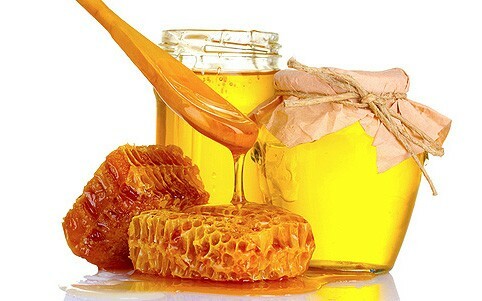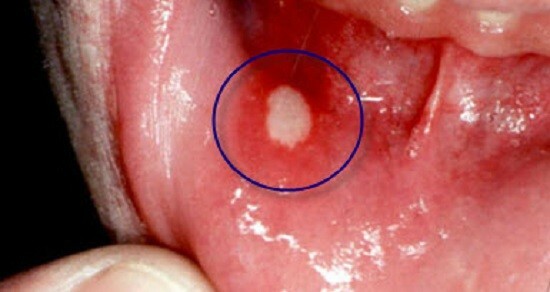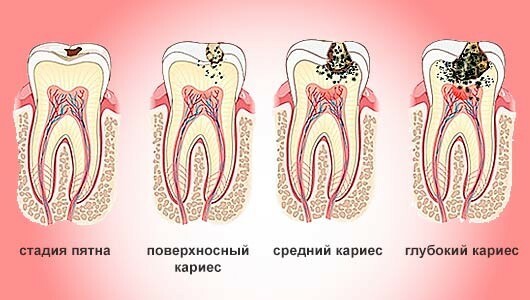Stomatitis is a rather unpleasant phenomenon, manifested in the form of ulcers on the oral mucosa. This process can lead to physical injuries, chemical effects, viral infections, decreased immune response, and much more. Despite the fact that stomatitis is quite harmless, it can significantly worsen the quality of life for an indefinite period. Formed in the oral cavity "sores" with irritation cause severe pain and thereby make it difficult to eat. To reduce pain and speed up the recovery process, many experts recommend that the treatment of stomatitis with honey. This product has proven antimicrobial, as well as immunomodulatory effect, so its use is so popular in folk medicine.

What is stomatitis?
Stomatitis is the most common disease of the oral mucosa. It is very difficult to find a person who would never have hurt them. Even today, the pathogenesis of the disease has been poorly studied, however, there are certain theories of pathological mechanisms that provoke inflammatory processes on the mucosa. Scientists suggest that stomatitis is a peculiar reaction of immunity to contact with unrecognized molecules. When a similar molecule hits the epithelium of the oral cavity, a signal is sent to the immune system, to which it responds by attacking the lymphocytes. Due to similar reactions on the surface of the mucous membrane, "ulcers" are formed, which are stomatitis.

In addition, in the course of various studies, several factors have been noted that increase the chances of getting stomatitis.
This includes:
- Non-compliance with the rules of oral hygiene;
- Poor quality of food;
- Low-quality dentures;
- Tobacco smoking;
- Mechanical, chemical or thermal damage to the oral mucosa;
- Diseases of the gastrointestinal tract.
Why use honey?
Is it possible to treat stomatitis with honey? Due to special circumstances, not everyone has the opportunity to apply for qualified medical care. However, most people in the kitchen are an ordinary jar of tasty honey. The medicinal properties of honey were studied in detail in various studies. It was found that this product has some antimicrobial, as well as immunostimulating activity. Antiseptic action of honey, directed at pathogenic microorganisms, will prevent the recurrence of "sores", as well as protect those already formed from additional infection.
The useful microelements in the honey make up the deficit in the body, which is beneficial for the immune system. Many note that after local application of honey, the intensity of pain also decreases, which greatly facilitates the intake of food. However, based on the experience of traditional medicine, we can say with certainty that the daily use of honey, for the period of treatment of the disease, accelerates regenerative processes and prevents the development of complications. The use of honey in the form of a rinse solution or in the form of a local application on the disturbing area helps to reduce the period of the disease for at least a few days.
Recommended recipes
There are several basic ways to use honey in the treatment of stomatitis. Their effectiveness is more or less equivalent, so the priority depends on the individual preferences of the patient. The most popular way is directly applying honey to the "sore".Many people prefer to apply it on the mucous membrane with the help of an ear stick, but after that it is necessary to be very careful not to lick the "medicine" prematurely.
Some fans of traditional medicine pre-moisten the cotton ball with honey, and then put it on the gum. This technique will allow long-term exposure to the affected area of the mucosa, but when used, the risk of damage to tooth enamel is increased.
The recommendations given in this article are not guidelines for action. For more detailed information on the treatment of stomatitis, it is recommended to consult a dentist.
Also on the basis of honey, an effective rinse solution can be prepared. To do this, take one teaspoon of honey and add it to a warm, pre-prepared solution of chamomile. To prepare this solution you need to take the dried petals of chamomile and pour them with boiling water. The resulting mixture should be insisted for a couple of minutes, drain, and then add honey. To get the effect of treatment, it is recommended to preheat before rinsing to a temperature just above room temperature. The mouth is rinsed at least 2-3 times a day, otherwise the beneficial effect of honey and chamomile will not be so pronounced.
Contraindications
It is necessary to mention the negative effect of honey on the teeth. Long contact with the enamel promotes the formation of caries and further destruction of the entire tooth. For this reason, many dentists recommend after a local honey application on a stomatitis "sore" wait 20 minutes, and then rinse your mouth with a glass of warm, purified water.

It must also be said that many people with honey use have a marked allergic reaction. Such reactions can be even more dangerous than stomatitis, so before using honey in your treatment it is recommended to make sure that there is no individual intolerance to this product. Allergic reactions can be expressed as:
- Urticaria;
- Angioedema;
- Digestive disorders;
- Anaphylactic shock.
If you have something like this, you should immediately call an ambulance team.
